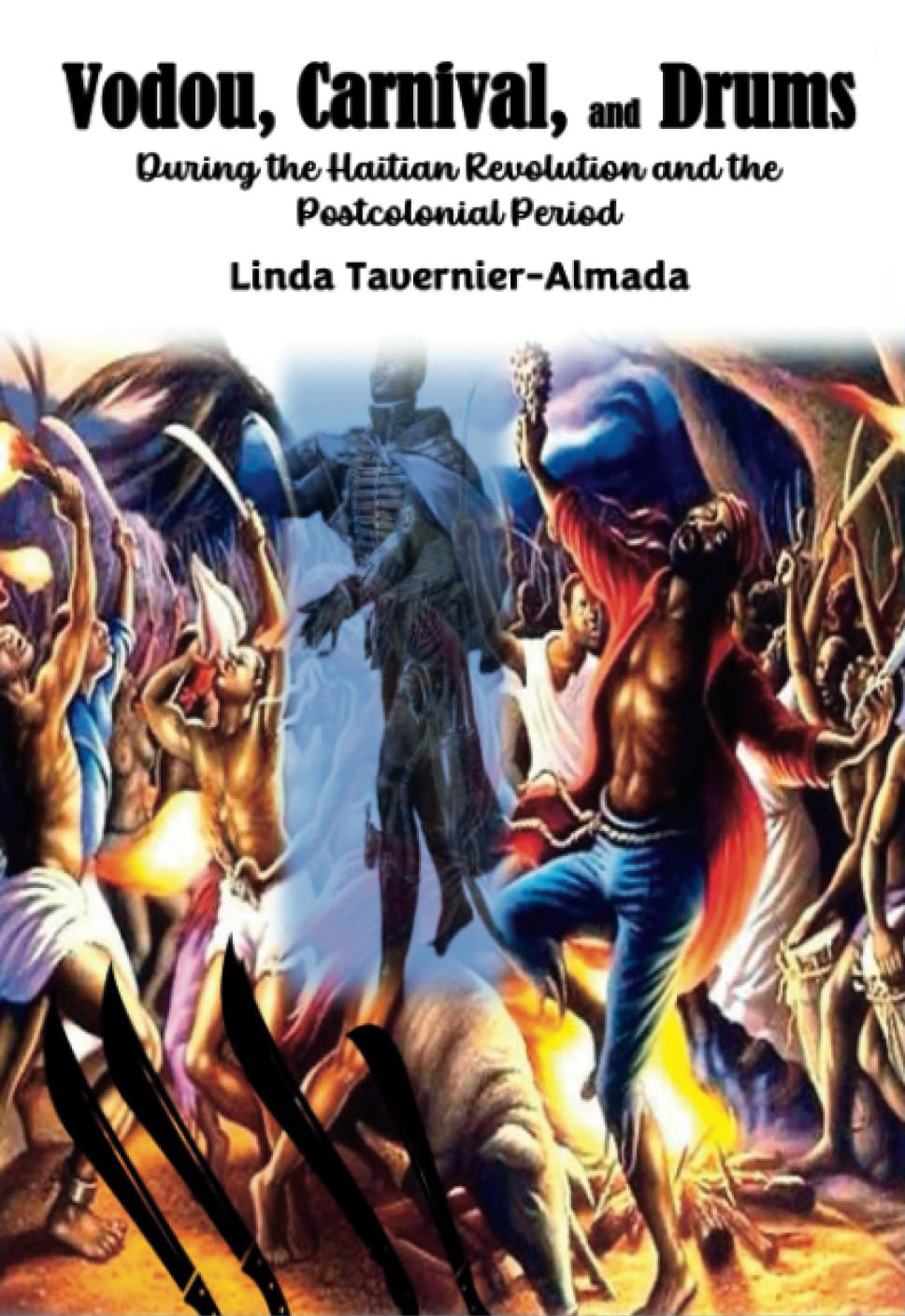This important book will be welcome to specialists in several interdisciplinary fields as well as to a range of international readers. Tavernier-Almada’s well-researched, challenging study corrects many received ideas and clichés regarding the character of the hybrid, folk religion inspired by ancestral Dahomeyan beliefs and practices known as Vodou. In this richly documented and illustrated volume, the author convincingly demonstrates the decisive role of Vodou in the empowerment, resistance, revolts, rebellions, and finally, revolutionary liberation of the enslaved people of Haïti, 1791–1804, some of whom were first brought to the island in the 16th century.

A partial view of Marie Jean-Baptiste’s art work “Bois Caiman Bwakayman Vodou Ceremony Haitian Revolution”.
One of the principal strengths of the work is its sustained, detailed focus on the spiritual, ritual heritage of Vodou practices in Haïti as an engine for the restoration of a communal order based on real phenomena, fairness and justice. As she puts it in her fascinating chapter on the “Lwa as Symbols of Resistance”: “Colonial Vodouisants had not only created a form of covert nation-state within Vodou they had also at the symbolic level created within it a metaphoric form of government.”
Tavernier-Alamada’s accounts of the role and activities of historical Vodou leaders, the Houngans and Mambos, the priests and priestesses who also served as teachers and guides to the community, provide a particularly vivid front-row experience of the influence of Vodou in the essential preservation of identity and personhood of the enslaved community in the face of systematic, physical, psychological and cultural genocide by the occupying white colonial powers and the religionists who served their purposes. Based on her detailed research, the author makes the characters and personalities of spiritual leaders, revolutionaries, and battles for a final revolutionary victory over the oppressors, unparalleled in the history of slavery at the time, become vibrantly alive through her narrative.
The scope of the study, dated from the earliest arrivals on the island of Haïti (Ayiti) of enslaved persons from the Dahomeyan region in Africa in the 16th century to the late twentieth century, is vast. While such a broad sweep could be considered a weakness of the work, Tavernier-Alamada succeeds in keeping the focus of the study on the detailed history of a local community, its travails, its culture, its difference, and, finally, its tragedies, while placing it in the larger context of the extended history of slavery as a global atrocity over the centuries.
Tavernier-Alamada recounts in her chapter on “Vodou Ginen and Nation: Power for the Oppressed,” how the enslavers could not or would not distinguish one group of Africans arriving from different regions from another, and grouped them all under a single denomination. She argues that Vodou was the Gramscian “ideological cement” that bonded enslaved Haïtians into a cohesive force. The author’s study and approach invite both future researchers and the general reader to consider the value of such specific, detailed studies focused on substantial research on individual locales and circumstances as a critical strategy and act of understanding in the service of, and respectful, of the truth, rather than on a “one size fits all” approach to this complex history.
Tavernier-Alamada’s book is essential reading in interdisciplinary and comparative fields of folklore, religion, African Diaspora, and cultural studies.
